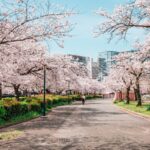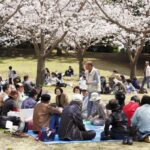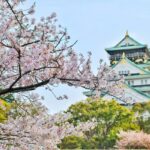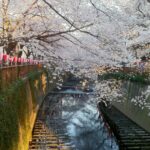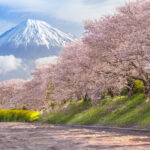Hanami is the world-famous Japanese tradition of flower viewing. Specifically, the cherry blossoms! Plums may also be included in some viewings, but they aren’t the primary focus of this wonderful event.
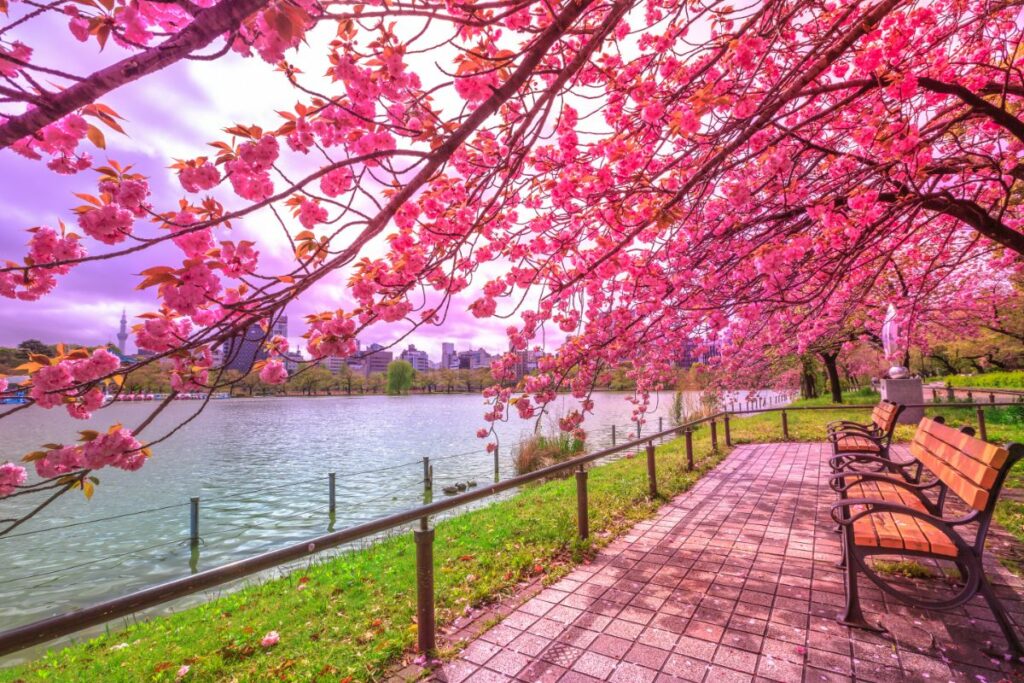
These celebrations typically take place in the first half of the year, within the first few months as spring comes around. Most viewings will happen near the end of March through to the middle of May.
However, the times are different in different parts of the country, with some happening only in May, and others happening as early as February.
During this period, tourism booms all over the country. People from all over the world fly out to get a look at the spectacular sights.
And doesn’t that make you wonder – how long have Hanami celebrations been happening? What is the history of this tradition?
The answer to these questions may surprise you. This tradition has been around far longer than many people may expect, and there is a lot to cover about the history of Hanami in Japan.
The Importance Of Cherry Blossoms In Japanese Culture
You may be surprised to learn that cherry blossoms were important to the Japanese people long before they held blossom viewings.
For over a hundred years before the first viewing, these blossoms were thought to represent the goddess and guardian deity that watched over Mount Fuji.
Records from the 700s described this beautiful goddess, and the flowers were revered. While we have no records to turn to before that, it is entirely possible that these blossoms were revered for hundreds of years even before that.
The oldest use of the term “sakura” can be found in the Manyoshu. This is the oldest collection of poetry in Japan, and dates back to the Nara Period, which lasted from 710 to 794.
In this collection, the term is written using the character 神. This represents the “sa”, and is also the word for god – in particular, the god of rice paddies.
“Kura” is thought to represent a pedestal. This is the same pedestal that is used when humans are offering sake and food to the gods as offerings. Because of this, it was taken as a sign that, when the cherry blossoms bloomed, it was time to plant rice.
The First Cherry Blossom Viewing
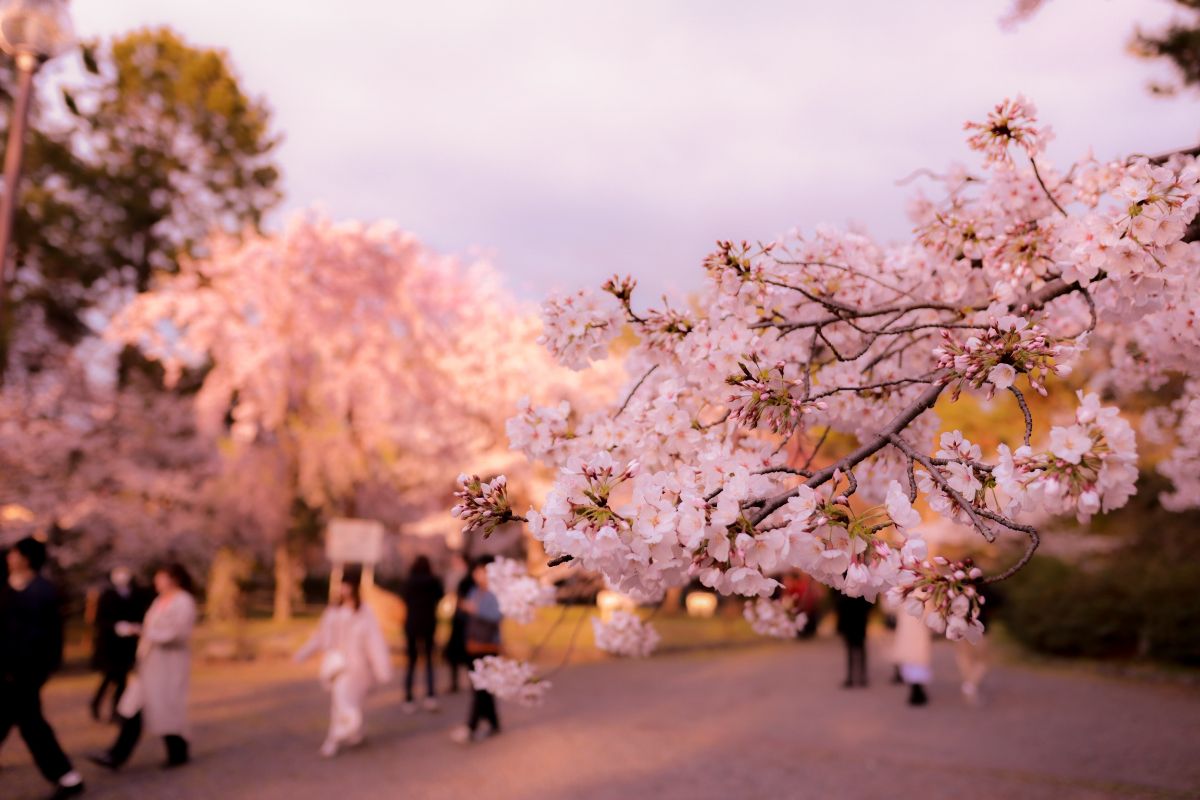
The first official cherry blossom viewing party happened in 812. No, we aren’t missing a “one” before that eight! This first viewing was held by Emperor Saga, and came with food, entertainment, and even poetry writing.
After he was struck by the beauty of a cherry tree located at Jishu Shrine, the emperor wished to make the viewing parties a regular occurrence. By 831, the practice of cherry blossom viewing had spread through much of the aristocracy.
A scene of this can be seen in the Tale of Genji, and truly highlights the importance of the tradition.
However, at this point, Hanami was only for the upper class. While the shogun planted cherry trees on temple grounds, the commoners were unable to appreciate their beauty in the spring. This only changed in 1720.
The Connection Between The Chinese And Japanese Traditions
The tradition of Hanami is not an original idea that comes from Japan. Rather, it was a celebration that occurred in China. Except in China, the people viewed plum blossoms rather than cherry blossoms.
Before Japan began their own tradition, the emperor would send envoys to China to study the technologies and culture.
A hundred years into the Heian Period (which lasted from 794 to 1185), Japan ended this tradition. This allowed them to begin focusing more on themselves, and they began to foster their own version of hanami, which is what we know today.
Incredible Hanami Celebrations
There are two impressive hanami gatherings that have been documented through the years. The first took place in 1594 and was held by shogun Hideyoshi Toyotomi. There, the celebrations lasted for five days, and 5,000 guests attended.
Four years later, in 1598, the same shogun held another party for 1,300 people. This celebration was held at Diago Temple in Kyoto, a location where he had ordered 700 cherry trees to be planted.
It was these celebrations that paved the way to wonder-day hanami celebrations throughout Japan.
Planting Cherry Trees For The Commoners
Even after the capital was moved to present-day Tokyo, the shogun continued to plant cherry trees. Iemitsu Tokugawa began planting his beautiful cherry trees from Yoshino in today’s Ueno Park at Kanei-ji Temple.
Only in 1720 did Yoshimune Tokugawa begin planting cherry trees near Oji, in Asukayama and Asakusa. This finally brought the cherry trees to the common people in the city.
Of course, there are other theories as to why cherry trees were at last planted in and around cities. One of these theories is to reduce the flooding around rivers.
The idea was for the blossoms of the trees to gather crowds, which would then compound the ground. As a result of this, the soil would not be washed away, so it made sense for the trees to be planted in select areas.
Different Types Of Blossoms
Like with everything, it didn’t take long for a favorite cherry tree to arise – the Somei-yoshino variety. It was created by mixing cherry trees, and came into existence in Somei Village – hence the name.
Roughly 80% of the cherry trees in Japan are this variety, but there are eight large families of cherry trees in Japan. This comes to a total of around 600 distinct varieties!
How Long Do Sakura Blossoms Last?
As we all know, cherry blossoms do not last long. They come and go seemingly in the blink of an eye. Generally these blossoms will last a maximum of 14 days, but this can vary depending on the species.
The timeframe when the cherry trees blossom will also depend on the variety and their location. Their distinctive pink color will only last for another 6 or 7 days after they reach their peak bloom, so you will never have a long time to enjoy the spectacle.
The Cherry Trees Won’t Last Forever
Although everyone loves the cherry trees throughout Japan, they are in danger. A large number of the country’s favorite trees were planted before World War II, and they are getting old. As such, there is a very real possibility of the trees drying off.
These trees are not hardy, and struggle in cold conditions. There are also a variety of other problems that these trees have, and they only grow in specific conditions.
As they don’t come from seeds but cuttings, they are all clones, and are at risk of disease, among other issues.
As such, these trees are at risk of dying off in the future. Planting new ones is an expensive process, and not one that the Japanese government is likely to take on any time soon.
So, make the most of the cherry trees as they are now, because things may change in the future.
Final Thoughts
The viewing of the cherry blossoms is a tradition that goes back over a thousand years in some places. Hanami has turned into what we know today, and is now a much loved celebration.
However, because of the risks that the cherry trees face, we don’t know if they will still be there in the next hundred years.
- 16 Best Websites To Watch Japanese Movies With English Subtitles - May 11, 2023
- Is ZIPAIR The Best Airline For Traveling To Japan? - May 11, 2023
- Ryu Murakami Vs Haruki Murakami – Which One Should You Read? - May 11, 2023

